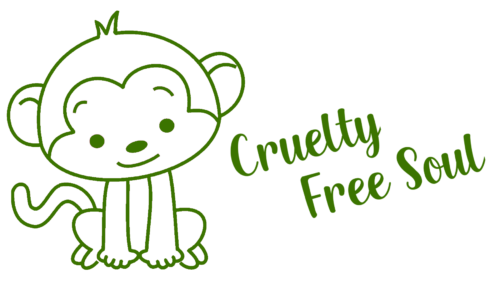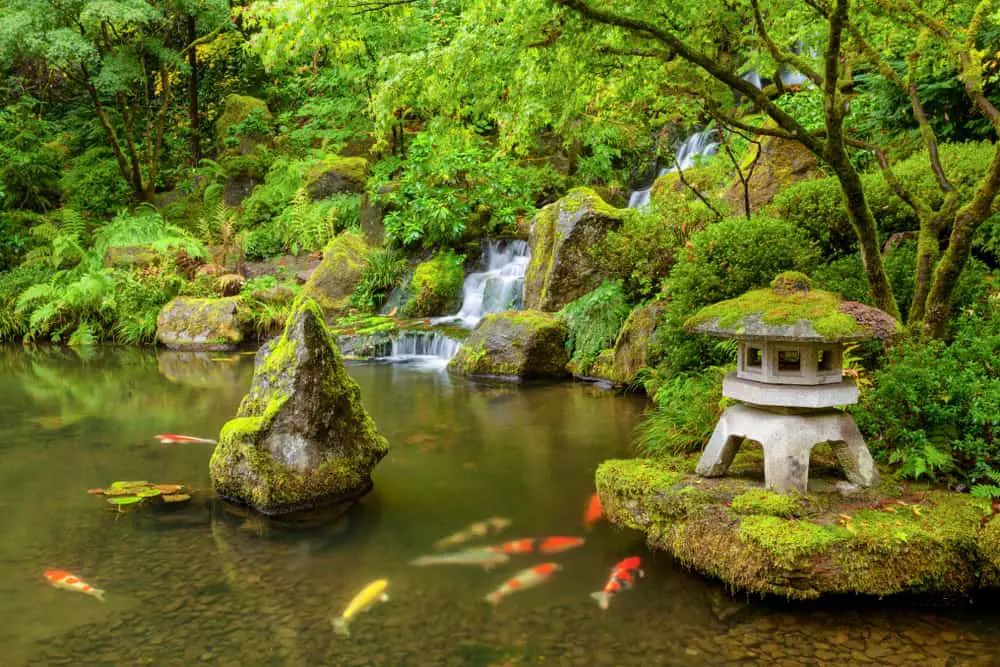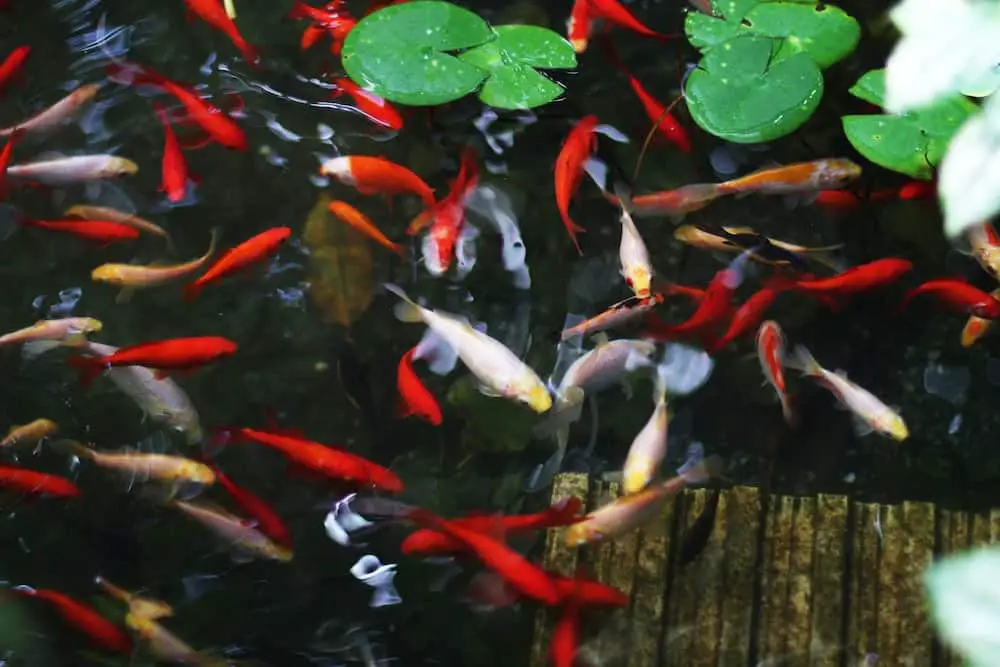Installing a koi pond is a beautiful way to turn your garden into a charming and sophisticated space. These ponds are relatively easy to maintain but still fun and rewarding to develop.
If you like fish, then this will definitely give you a hands-on roll in learning to care for them. But as great as they can be for us – are koi ponds cruel to the fish you choose to keep?
Koi ponds are not cruel as long as the owner cares for the fish appropriately and supplies them with sufficient space and nutrition to support a healthy life. Inherently, koi ponds are no different from indoor fish tanks. The only element of cruelty that might be present is neglect, which depends solely on the owner.
Read on to learn more about koi ponds and why these cruelty-free enclosures are a captivating asset to have in your everyday garden.
You will also learn what is essential for a healthy koi pond and how to care for one properly.
What is a Koi Pond?
Koi fish are genetically selected descendants of the Chines carp that were chosen for their spotted appearance. And a koi pond is simply an artificially created habitat for these fish. Although a koi pond is not natural by any means, most owners go through significant lengths to make it look as natural as possible using various plants and water features.
Even though Koi ponds and fish are beautiful enclosures – neither are particularly cheap. The average koi pond will cost about $2,000-$3,000 after being decorated and equipped with a sufficient filter and other necessities.
Koi fish themselves can cost anywhere from $50 to several thousand, depending on numerous factors such as:
Some koi ponds can be created indoors or in a habitat similar to an aquarium. However, more often than not, the pond is located outdoors, typically in a garden, and built into the land's foundation.
Despite being built into the land, koi ponds are not considered "landscape features" like water garden ponds, but rather they have been deemed a pool or large fish tank.
We must say that although a koi pond is quite a pricy investment once all the bells and whistles are installed – there is nothing quite like the serenity of watching these majestic creatures in the most natural habitat you can create.
Are Koi Ponds Cruel?
Ultimately, koi ponds are not cruel as long as the fish are acquired safely and provided all the care necessary to provide them with a long and fulfilling life.
Once a koi pond is properly installed, it takes mere minutes of maintenance a week to support the life of these fish that can live for many years if kept healthy.
Remember that if you want to own a koi pond, you need to do ample research on these fish and their needs before investing in such a pricy but rewarding animal and its habitat.
In all fairness, there are some common concerns regarding the potential cruelty of koi ponds and we are going to address each stance below.
Easy Prey for a Hungry Predator
A major concern regarding koi ponds is the fact that they are typically located outdoors. So, the koi are not only subjected to the elements and fluctuating temperatures, but they could be an easy meal for a hungry predator.
This is a valid concern, not only for those questioning if these enclosures are cruel but also for the owners. For years koi fish were subjected to these issues due to poor habitat design, amongst other elements. But today – everything has been addressed.
If you choose to build a Koi ponds today, it’s constructed with straight walls and devoid of steps or any formations that would easily allow a predator to get in and out of the pond.
Koi fish are pretty low down on the food chain, so they need strong instincts to know how to survive.
It is unlikely they will hang around the surface around the pond's edge long enough for a predator to snatch them away for dinner.
But what about birds? Can't they just pluck them out of the pond mid-flight? Yes, they could.
But a good owner that cares about their pond and their koi (not to mention all the money they've invested in them) will take precautions to stop predators.
Some common tools include:
One could argue it is neglectful and therefore cruel not to take the necessary precautions to protect your koi, but most owners have one or multiple of these examples in place to keep their fish safe.
They Belong in the Wild
Keeping a non-domesticated animal as a pet can be a bit of a touchy subject. There are certain animals, like tigers or alligators, that should unquestionably never be acquired as pets. They require far more care than humans can ever provide. Their very nature isn't suitable for domestication.
The same cannot be said for the koi, predominantly because these fish were never from the wild, to begin with.
Yes, some koi can survive in the wild now, but only in very specific conditions found in few regions of the world. Ultimately, these are domesticated animals and are likely to live longer and thrive with a suitable owner than they would in the wild.
Subjecting Them to Winter Conditions is Cruel
It is a common misconception that if you live in an area with some pretty harsh winters (think Buffalo, NY) that you can't have a koi pond. And if you do, you are cruelly subjecting your fish to these conditions.
If you live somewhere that will expose your koi pond to the extreme cold and immense snowfalls of winter – then you will certainly be treating the animals cruelly if no precautions are in place.
Luckily, this point is similar to the predator concern in the sense that the majority of educated and caring owners will not just leave their beautiful koi to freeze into fish popsicles when winter hits.
The best way to ensure a koi fish's safety during the winter is to either move them to an indoor enclosure or have a water heater installed in your koi pond. If you live in a colder region, we recommend the heater. They might be pricy, but at least you know you'll use it enough to justify the purchase.
Another point to make is that koi fish are prone to ulcers, and this risk is significantly increased during winter when they rest at the bottom of the pond.
It’s important to have a smooth-bottom pond, so your koi isn't constantly rubbing against rocks or gravel. These materials can cause injuries that can potentially ulcerate, become infected, and kill the fish.
Basic Koi Care
As we mentioned before, koi ponds are pricy endeavors, but they are relatively easy to maintain once they are completely installed. And unless you are intentionally or even unintentionally neglecting the fish – you are not being cruel.
Top 5 Things Your Koi Pond Needs
To prevent this, here are some basic tips of koi fish care you should utilize.
Some things remember koi fish and what they need as a species before investing in a koi pond and acquiring these creatures.
Final Thoughts
Those of you who have always dreamed of having your own koi pond will be happy to learn that this habitat is cruelty-free – as long as it is properly built and your koi care is top-notch.
Since these are pricy investments that require significant amounts of equipment to function properly, we suggest you start with two small koi (they are social fish that enjoy living in pairs) until you have the hang of koi care.
Once you are confident these two koi are healthy, you can acquire more, given you have the space and resources.


